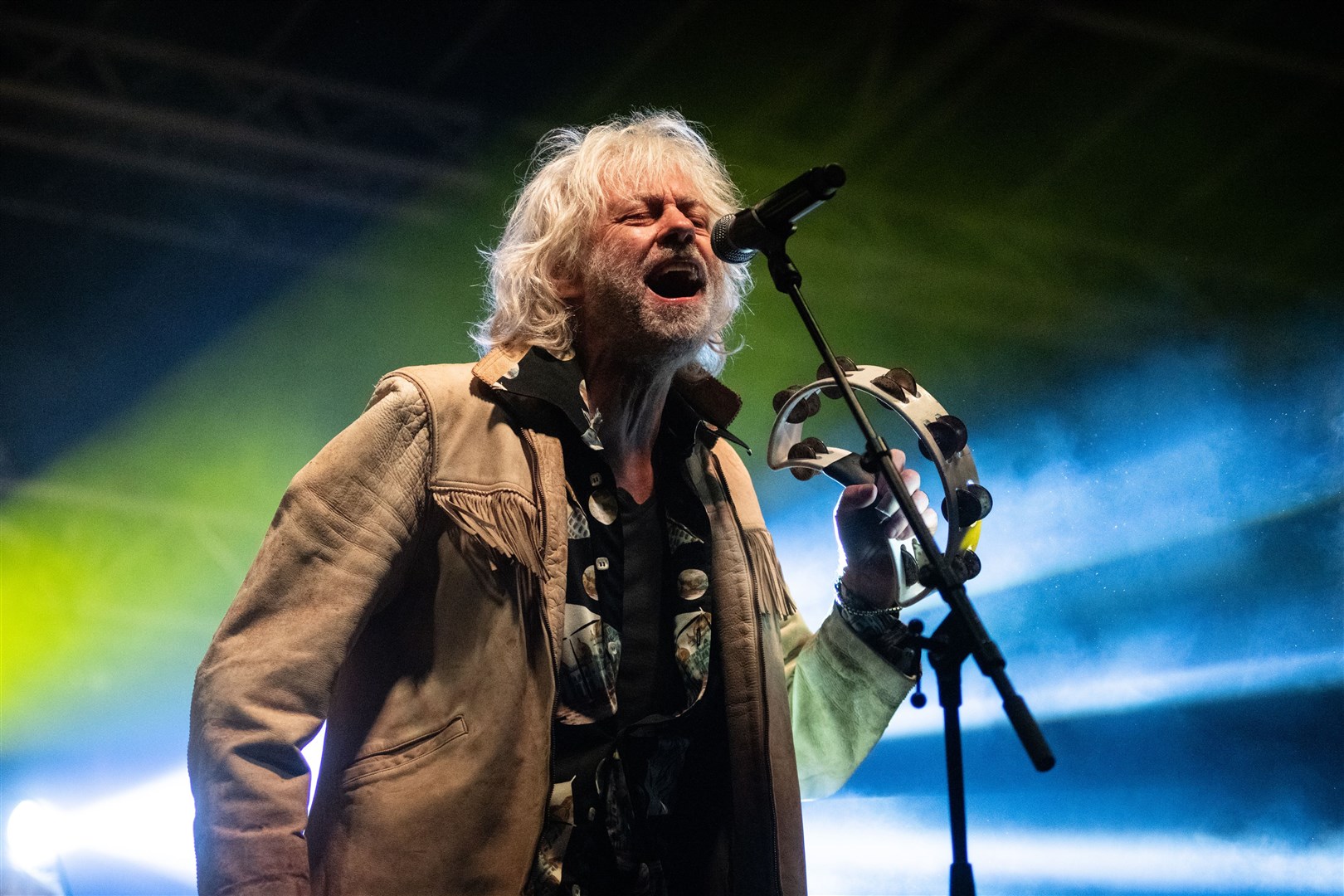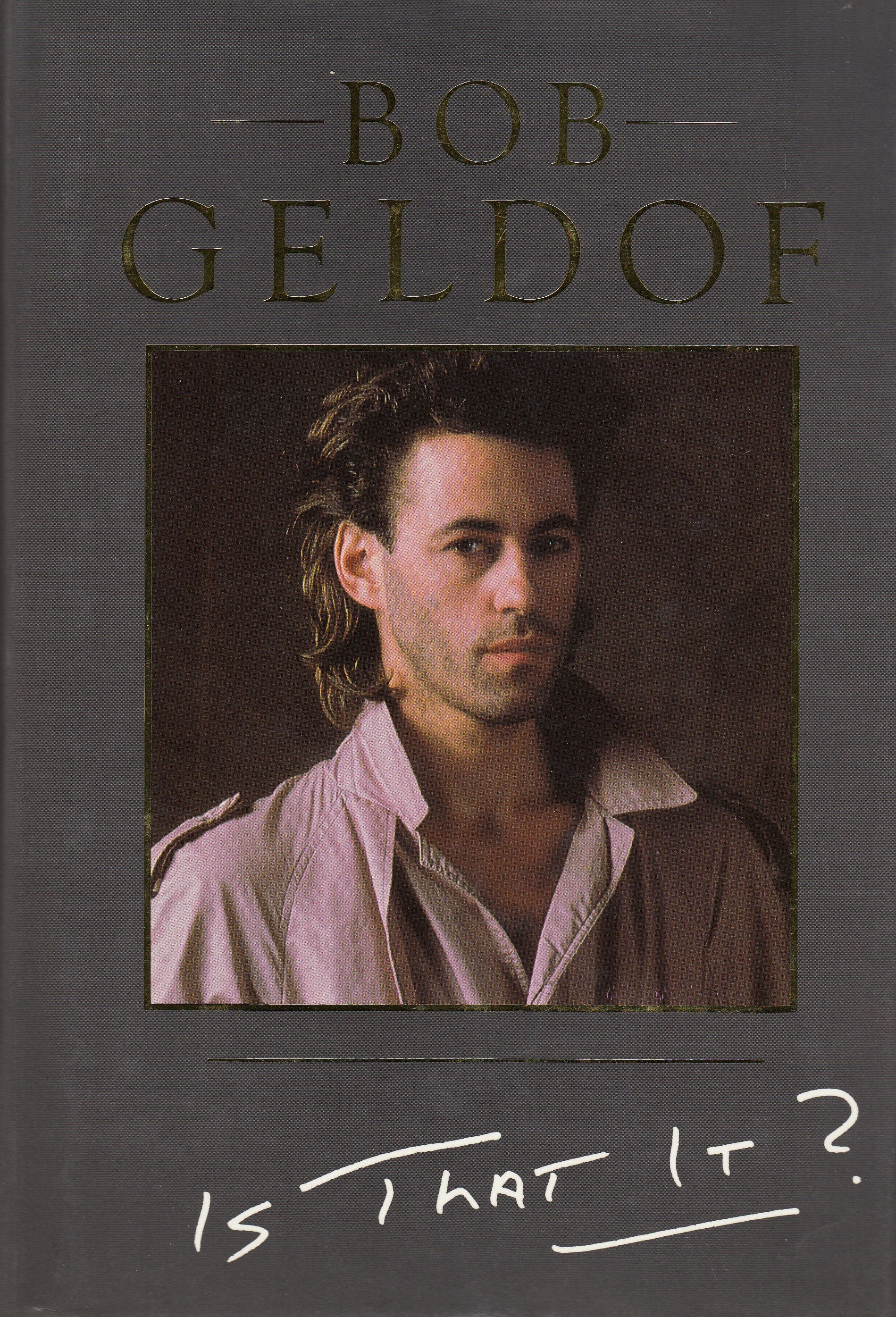What is Bob Geldof's Net Worth?
Bob Geldof’s net worth is $150 million as of August 2025. The Boomtown Rats frontman turned humanitarian built his fortune through music royalties, solo work, publishing deals, public speaking, and his production company Ten Alps.
Band Aid and Live Aid didn’t just redefine celebrity activism — they also opened doors to decades of ventures that secured his long-term financial success. Four decades later, Live Aid’s legacy still resonates as one of music’s most powerful cultural moments.
Whether known as a punk pioneer, a global charity leader, or simply Sir Bob, Geldof’s wealth and influence reach far beyond a single hit song.

Princess Diana, Prince Charles, and Bob Geldof attend the legendary Live Aid concert at Wembley Stadium in July 1985. The global benefit show, organized by Geldof and Midge Ure, raised over $125 million for famine relief in Africa and marked a defining moment in both music and humanitarian history.
Early Life: From Irish Upstart to Punk Outsider
Born in Dún Laoghaire, County Dublin, Geldof’s early life was steeped in hardship. He lost his mother young and was bullied at Blackrock College — ironically, the same institution he’d later denounce in explosive interviews.
Before music, he worked odd jobs — from a pea canner to music journalist in Vancouver. But in 1975, Ireland called him back. And so did the stage.
The Boomtown Rats: Punk, Provocation & Profit
Long before he became a global humanitarian, Bob Geldof made his name as the sharp-tongued frontman of The Boomtown Rats. With hits like “Rat Trap” and the chillingly iconic “I Don’t Like Mondays”, both of which topped the UK singles chart according to the Official Charts Company, the band didn’t just ride the wave of punk — they stirred the pot at every turn. Their sound was edgy, their lyrics bit hard, and Geldof’s no-filter approach made them both famous and infamous.
The Rats were banned from airplay in parts of Ireland thanks to Geldof’s outspoken views on religion, politics, and the status quo. But while they may have been blacklisted at home, their reputation only grew abroad. Album sales soared, global tours followed, and early MTV exposure helped cement their place in music history — and Geldof’s bank account.
By 1986, though, the energy had shifted. Geldof, already stepping into the spotlight with Band Aid and Live Aid, was increasingly driven by activism rather than music charts. Feeling boxed in by the band’s format, he made the call to walk away. Leaving The Boomtown Rats wasn’t a failure — it was a pivot. And it opened the door to a new era where Geldof would channel his influence far beyond the stage.
Even after his exit, the band’s legacy continued to earn — through royalties, compilations, and nostalgic tours. But it was those provocative early years that built the platform Geldof would use for decades to come.

Bob Geldof brings raw energy to the stage during a live performance, proving his rock spirit endures decades after Live Aid. With tambourine in hand and signature style intact, the legendary activist-musician continues to captivate audiences worldwide.
Solo Career & Bestseller Moves
After parting ways with The Boomtown Rats in the mid-1980s, Bob Geldof wasted no time carving out a solo path. His debut solo album, Deep in the Heart of Nowhere (1986), featured the anthemic “This Is the World Calling”, which earned him radio play and kept his name in the musical spotlight. While his solo career never quite reached the commercial highs of his Boomtown Rats days, it solidified his status as an enduring voice in rock.
At the same time, Geldof proved he wasn’t just a frontman — he was a storyteller. His autobiography, Is That It?, became an instant bestseller upon its release in 1986, offering a raw and often self-deprecating look at fame, activism, and personal tragedy. The book not only added a fresh revenue stream through publishing royalties, but also established Geldof as a compelling public intellectual beyond the music world.

Is That It?, Bob Geldof’s 1986 autobiography, chronicles his early life, rise to fame with The Boomtown Rats, and the creation of Live Aid. The memoir offers an unfiltered glimpse into Geldof’s activism, music career, and personal struggles, solidifying his reputation as both a rock rebel and humanitarian icon.
With publishing deals, speaking engagements, and continued royalty income from both his band and solo work, Geldof’s post-Rats career became a blend of music, media, and literary success — all contributing to his long-term net worth and cultural relevance.
Band Aid, Live Aid & the $300 Million Pivot
Bob Geldof’s shift from punk provocateur to global humanitarian wasn’t just a bold career move — it was a defining moment in pop culture history.
In 1984, he co-wrote “Do They Know It’s Christmas?” with Midge Ure, bringing together some of the biggest British pop stars of the era under the name Band Aid. The single flew off shelves, selling over 3 million copies and raising more than $20 million for famine relief in Ethiopia. It wasn't just a hit — it became a movement.
The charity single became the fastest-selling UK single in history at the time, according to the Official Charts.

A powerful shot from Live Aid: Bob Geldof, Freddie Mercury, Paul McCartney, and George Michael, legends united on the Wembley stage for an unforgettable concert that helped feed a continent.
But Geldof wasn’t finished. In 1985, he spearheaded Live Aid — the now-legendary dual-venue concert staged at Wembley Stadium in London and JFK Stadium in Philadelphia.
Broadcast live to nearly two billion people worldwide, the event shattered fundraising expectations and ultimately pulled in between £100 and £150 million for humanitarian efforts, according to National Library of Ireland (NLI)and contemporaneous reporting by the New York Times.
While Geldof famously took no cut from the Band Aid or Live Aid proceeds, the impact on his public image was priceless. The exposure catapulted him into a new league, opening doors to media, production, publishing, and consultancy deals.
From high-profile speaking engagements to behind-the-scenes TV work, these new opportunities quietly became long-term income streams — proving that philanthropy, while not profitable on paper, can be a powerful pivot in building influence and wealth.

The 2004 reissue of "Do They Know It’s Christmas?" by Band Aid 20 featured this haunting, collage-style cover—juxtaposing holiday icons with stark imagery to draw attention to global inequality. The track brought together top UK artists to raise funds for famine relief, echoing the impact of the original 1984 Band Aid project.
Live 8 & Media Ventures: From Protest to Profit
Two decades after Live Aid, Bob Geldof once again stepped into the global spotlight — this time with Live 8. In July 2005, he organized a series of massive, star-studded concerts across 11 cities, timed to coincide with the G8 summit.
The goal wasn’t fundraising, but pressure — urging world leaders to cancel debt, increase aid, and reform trade policies in developing nations. From London’s Hyde Park to Philadelphia and Berlin, the concerts reached a worldwide audience of over 3 billion and reignited global conversations about inequality and poverty.
But while the cause was humanitarian, the momentum also boosted Geldof’s growing media empire. Around this time, he co-founded Ten Alps, a television and digital production company specializing in documentaries, education content, and current affairs.
According to UK Companies House, Geldof’s media company, Ten Alps Plc, remains an active entity, trading under the rebranded name Zinc Media.
With a sharp eye for socially conscious storytelling, Ten Alps secured lucrative government contracts, branded content deals, and partnerships with major broadcasters. Its portfolio included everything from school curriculum media to hard-hitting investigative series — a perfect blend of mission and money.
These ventures quietly but significantly diversified Geldof’s income beyond music and books. By leveraging his credibility and media-savvy persona, he turned activism into a sustainable business model. Through Ten Alps and similar projects, Geldof added millions to his net worth while maintaining his position as a respected voice in both media and humanitarian circles.
Real Estate, Rare Finds & a Life of Quiet Wealth
While Bob Geldof is far better known for his activism than displays of wealth, he’s quietly amassed an impressive portfolio of assets over the years — the kind that reflect both his rock-star past and his sharp business instincts.
One of his most notable holdings is his long-time residence in Battersea, South London — a multi-million-pound Georgian townhouse tucked away in a leafy corner of the city. Geldof’s Battersea home ownership was confirmed via UK Land Registry filings.
Known for its elegant interiors and private garden, the property has been home to Geldof and his family for decades. In interviews, he’s described it as his sanctuary — a place that keeps him grounded despite decades in the public eye. He also reportedly owns additional property in Kent, offering a quieter countryside escape outside the capital.

A glimpse of rock royalty in London: Bob Geldof's residence at 57 Prince Of Wales Mansions, a stylish corner of the city.
Beyond real estate, Geldof has a collection of valuable items tied to his music legacy. These include original pressings, memorabilia from Band Aid and Live Aid, and rare instruments — some of which have fetched significant sums at charity auctions. His art collection, while largely kept out of the spotlight, is rumored to include works by well-known British and Irish artists.
Unlike many in the celebrity world, Geldof keeps his wealth understated. But from prime London property and exclusive travel to intellectual property rights and royalties, his asset base reveals a life shaped by influence — and quietly backed by financial security.
Personal Life & Tragedy
Bob Geldof appears with his daughters at a Live 8-related event, highlighting his long-standing commitment to activism and family. The image captures a rare public outing with his children, including the late Peaches Geldof.
Geldof’s personal life has been as headline-making as his activism. His marriage to journalist Paula Yates produced three daughters, including the late Peaches Geldof, whose tragic death in 2014 mirrored her mother’s.
Following Paula’s death, Geldof became legal guardian to her daughter with Michael Hutchence, Tiger Lily — whom he later adopted.
Despite these profound losses, Geldof has remained a fiercely private but vocal advocate of fathers' rights and responsible parenting.
He’s now married to French actress Jeanne Marine, and the couple resides in Battersea, London.
How Rich is Bob Geldof and How Has He Made His Money?
| Income Stream | Estimated Contribution |
|---|---|
| Music Royalties (Rats & Solo) | $25M+ |
| Media/TV Production (Ten Alps) | $50M+ |
| Publishing & Book Sales | $10M+ |
| Licensing & Public Speaking | $5M+ |
| Real Estate & Investments | $30M+ |
| Charitable Ventures (non-profit) | Not-for-profit, reputational return |
Bob Geldof: Latest News & Updates
Recent News (July 27, 2025): Bob Geldof continues to make headlines beyond music and finance. In a recent interview on Sunday Morning with Trevor Phillips, he accused Israeli authorities of “lying” about the scale of starvation in Gaza, claiming that up to 1,000 people, including children, had died this month.
The remarks highlight how Geldof’s outspoken humanitarian voice — the same force that helped shape Band Aid and Live Aid — remains central to his public identity and legacy, even as his fortune stands at $150 million in 2025.
Bob Geldof Frequently Asked Questions
How much is Bob Geldof worth in 2025?
Bob Geldof’s estimated net worth in 2025 is $150 million.
What made Bob Geldof rich?
His fortune comes from a mix of music royalties, media company profits, book sales, and high-level public speaking.
Did Bob Geldof make money from Live Aid?
No, Live Aid proceeds went directly to famine relief. However, it significantly raised his profile and opened major business doors.
Who was Bob Geldof’s famous wife?
Paula Yates, a rock journalist and TV presenter. She later had a child with INXS frontman Michael Hutchence.
Is Bob Geldof still active in charity work?
Yes. While not in the spotlight as often, he continues advocating for humanitarian causes, particularly in Africa.
How many children does Bob Geldof have, and with whom?
Bob Geldof has four daughters: Fifi Trixibelle, Peaches, and Pixie, all with his first wife Paula Yates. He also adopted Heavenly Hiraani Tiger Lily Hutchence Geldof, Paula Yates's daughter with INXS frontman Michael Hutchence, after both of her biological parents passed away.
Curious About Net Worth? Finance Monthly Has the Insights You Need
From billionaires and CEOs to actors, athletes, entrepreneurs, and music icons like Toni Braxton, Paris Jackson and Ozzy Osbourne, Finance Monthly provides in-depth coverage of the wealth behind the names. Our net worth profiles go beyond the numbers, examining how fortunes are earned, managed, and shaped by unique personal and professional journeys.
Discover our full library of net worth articles to stay informed on who’s building wealth, how they’re spending it, and the financial trends defining 2025.
👉 Browse all our latest net worth stories HERE















